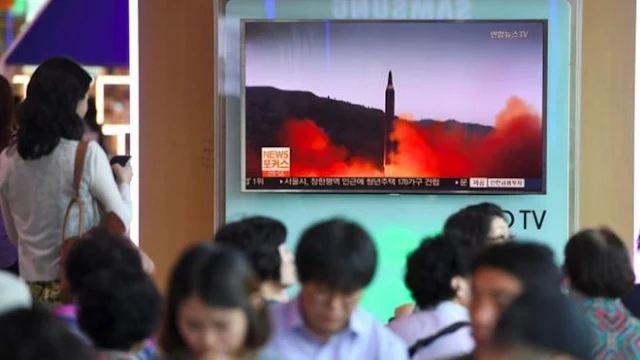North Korea has fired a ballistic missile across Japan, its second such provocative move in weeks.
South Korea's military said the missile reached an estimated altitude of about 770km (478 miles) and travelled 3,700km before landing in the sea off Hokkaido.
Japan's PM Shinzo Abe said his country would "never tolerate" North Korea's dangerous actions.
"If North Korea continues to walk down this path, it has no bright future," he said in a statement.
US Secretary of State Rex Tillerson also condemned the launch, which contravened UN sanctions.
He put the burden of response on China and Russia, nuclear-armed North Korea's main economic partners.
"China supplies North Korea with most of its oil. Russia is the largest employer of North Korean forced labour," he said.
"China and Russia must indicate their intolerance for these reckless missile launches by taking direct actions of their own."
Guam 'within range of rocket'
The South Korean military said the latest launch - the first since sanctions were tightened - took place from Sunan, the district where Pyongyang's international airport is located, just before 07:00 local time (22:00 GMT on Thursday).
The US and Japan said it was likely an intermediate range intercontinental ballistic missile (ICBM).
According to the initial estimates, it flew considerably higher and further than the missile fired on 29 August.
Japan had called that launch an "unprecedented" threat, while Pyongyang warned it was only "the first step" in its military operations in the Pacific.
The US Pacific territory of Guam, which North Korea claims to have plans to fire missiles towards, is 3,400km from Pyongyang, so would be within range of the latest missile.
- Pyongyang's missile and nuclear programme
- North Korea crisis in 300 words
- Have North Korea's missile tests paid off?
As with the last launch, the rocket flew over Japan's northern Hokkaido island before splashing down in the Pacific Ocean.
People were warned to take cover as raid sirens sounded.







No comments:
Post a Comment